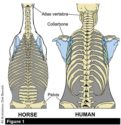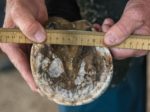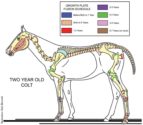Advertise Follow Us
Anatomy
Cornell University Farrier Steve Kraus explains the geometrical effects of trimming and shoeing
Read More
Equine Reciprocating Systems: Extreme Skeletal Specializations
In this sixth installment, Dr. Deb Bennett discusses the impact of the equine joint shape on the horse’s forelimb
Read More
Radiograph Method Can Fall Short in Determining Sole Depth
ELPO study illustrates need for closer evaluation of hoof tissues
Read More
Hall of Fame Farrier Dave Farley Shares 12 Points of Reference to Use When Trimming
Using a multidimensional approach can increase the likelihood of achieving a balanced foot
Read More
Research Journal: March 2020
The information, ideas and opinions expressed are those of the author and do not necessarily represent those of the United States Department of Agriculture.
Read More
Equine Reciprocating Systems: Periosteum, Joints and Growth
In the fifth in this series, Dr. Deb Bennett illustrates how the horse matures and the role joints play in locomotion
Read More
Equine Reciprocating Systems: Examining the Shoulder to Thorax Junction
In the fourth in this series, Dr. Deb Bennett illustrates the relationship between the horse’s forelimb and the body.
Read More
Improve Recognition of Hoof Distortion by Drawing One
Graphing exercise can help farriers improve their trim
Read More












